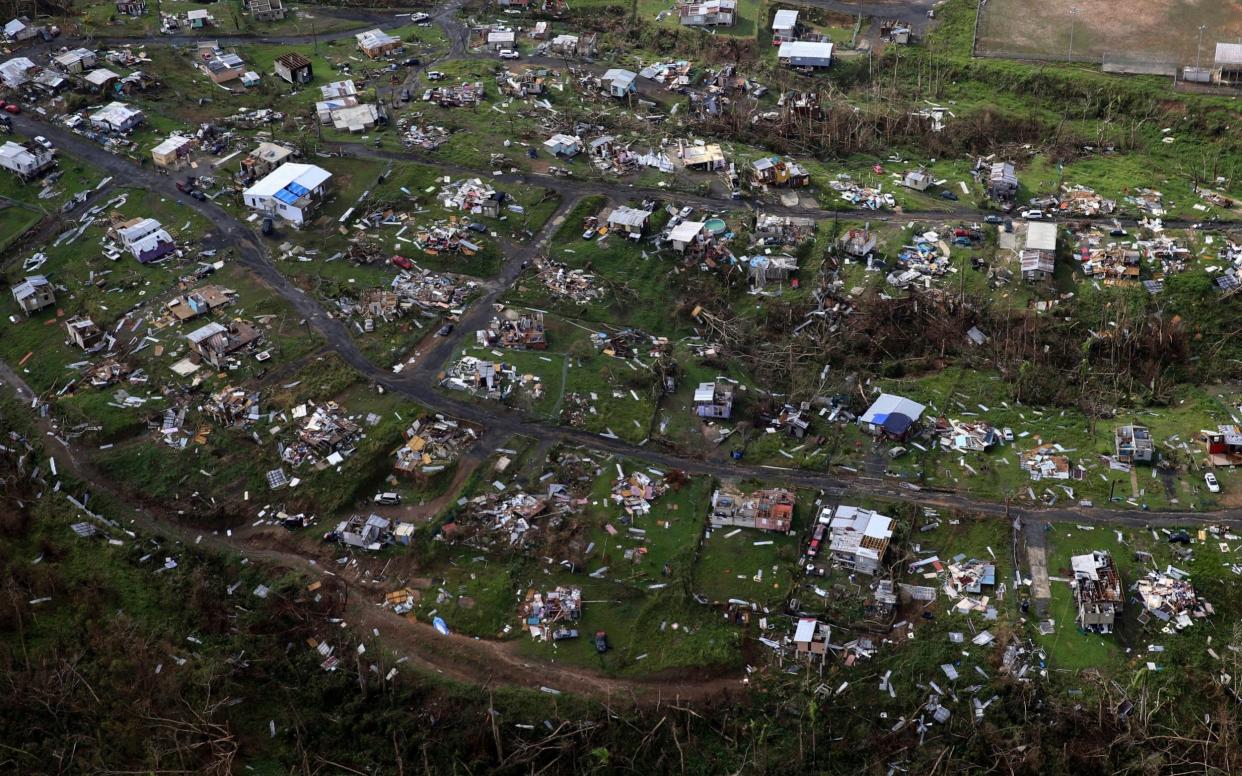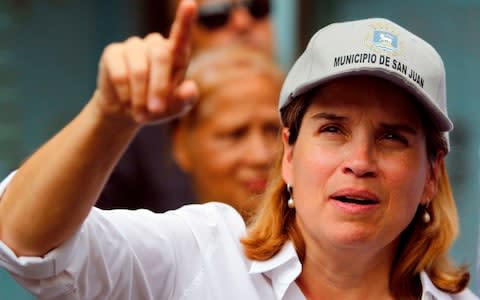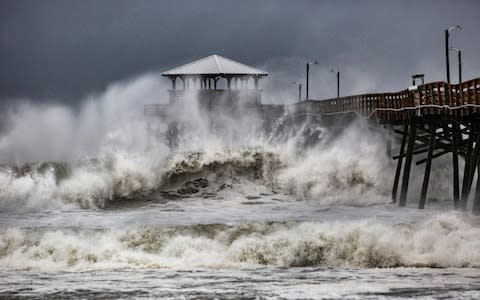Donald Trump claims '3,000 people did not die' in Puerto Rico hurricane

Donald Trump has rejected an official conclusion that around 3,000 people died due to the devastating hurricane that hit Puerto Rico a year ago.
Mr Trump said the death toll had only been 18 when he visited the US territory shortly after the storm, and claimed the higher figure had been inflated by Democrats to "make him look bad".
The US president made his comments on Twitter as a large swath of America's east coast was expected to be battered by Hurricane Florence.
Brock Long, head of the US Federal Emergency Management Agency (FEMA), warned that Florence could "kill a lot of people".
Florence was to be the first major test of FEMA since its response to the Puerto Rico disaster, which was widely criticised.
In the year since Hurricane Maria devastated the island, the Puerto Rican government's official death toll has risen several times.
Last month, it was placed at 2,975 after the government commissioned an independent study by public health experts at George Washington University.
The study concluded the number of people who died in the months that followed the storm, because of its effects, had been severely underestimated.
3000 people did not die in the two hurricanes that hit Puerto Rico. When I left the Island, AFTER the storm had hit, they had anywhere from 6 to 18 deaths. As time went by it did not go up by much. Then, a long time later, they started to report really large numbers, like 3000...
— Donald J. Trump (@realDonaldTrump) September 13, 2018
.....This was done by the Democrats in order to make me look as bad as possible when I was successfully raising Billions of Dollars to help rebuild Puerto Rico. If a person died for any reason, like old age, just add them onto the list. Bad politics. I love Puerto Rico!
— Donald J. Trump (@realDonaldTrump) September 13, 2018
But Mr Trump wrote on Twitter: "3,000 people did not die in the hurricane that hit Puerto Rico. When I left the Island, AFTER the storm had hit, they had anywhere from 6 to 18 deaths.
"As time went by it did not go up by much. Then, a long time later, they started to report really large numbers, like 3000..."
He added: "This was done by the Democrats in order to make me look as bad as possible when I was successfully raising Billions of Dollars to help rebuild Puerto Rico."
Mr Trump said people who died for any reason - "like old age" - had been added to the total. The president, who is Puerto Rico's head of state, added that he "loves Puerto Rico!"
The island is still suffering power failures and around 60,000 homes still have makeshift roofs.
Ricardo Rossello, Puerto Rico's governor who aligns with Republicans, said: "It is time to remember all those who lost their lives."
Carmen Yulin Cruz, the Democrat mayor of San Juan in Puerto Rico, called Mr Trump "delusional, paranoid, and unhinged from any sense of reality".

In Washington senior Republicans also distanced themselves from the president's remarks.
Paul Ryan, the Republican House Speaker, said he had "no reason to dispute" the death toll of 3,000. He added: "Casualties don't make a person look bad. It was a horrible storm."
Ahead of Florence striking the US east coast Mr Trump spoke with political leaders in the Carolinas and offered "whatever is needed," Sarah Sanders, the White House spokeswoman said.
Winds from Florence began lashing coastal areas in the two states.
The eye of the storm was expected to come ashore near Wilmington, North Carolina, where businesses were boarded up and streets deserted.
Tens of thousands of buildings were expected to be flooded, with up to 40 inches of rain in places, causing billions of dollars in damage.
Around 1.7 million people had been ordered to evacuate, airlines cancelled more than 1,000 flights to the area, and up to three million homes and businesses were expected to lose power.

The US Navy, Air Force and Army moved people, ships and aircraft out of the storm's path, and farmers transported livestock to safe areas.
Fears were growing of a potential environmental disaster if waste from North Carolina's many hog manure pits, and coal ash dumps, washes into drinking water supplies.
Further north, in Washington, the Republican leadership in Congress announced that votes would be cancelled on Friday.

